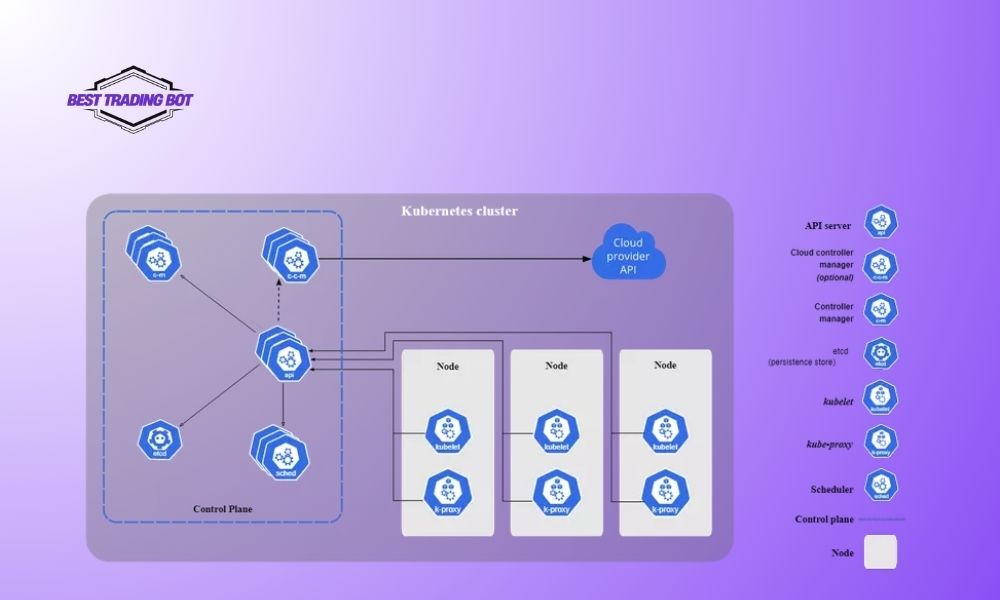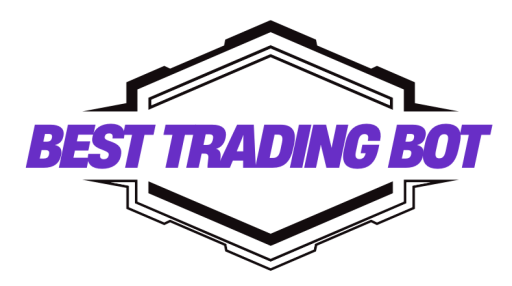A Kubernetes AI agent functions as an intelligent brain, built upon the platform’s core architecture to automate and enhance operations. To understand how this agent delivers value, we must first analyze the fundamental components of a Kubernetes cluster, as illustrated in the diagram, and see how artificial intelligence can elevate their purpose in a modern infrastructure.
Contents
The foundation: Analyzing core Kubernetes architecture
Before we can dive into how a Kubernetes AI agent works, it is essential to understand the core components it interacts with. The provided diagram illustrates a standard Kubernetes architecture, which is primarily divided into two main areas: the Control Plane and the Worker Nodes.

The Control Plane: The cluster’s brain
The control plane is the central nervous system responsible for managing the state of the entire cluster. It makes global decisions and works to ensure that the cluster’s current state matches the desired state defined by the user. Its main components include:
API Server (api): This is the front door to the control plane. All interactions, from a user’s kubectl commands to communication between internal components, must pass through the API Server. It validates and processes all API requests.
etcd: This is a consistent and highly-available key-value store. etcd stores all configuration data and state information for the cluster, acting as the single source of truth.
Scheduler (sched): When a new Pod is created, the scheduler’s job is to find the most suitable Node to run it on. This decision is based on resource requirements (CPU, memory), policy constraints, and other factors.
Controller Manager (c-m): This component runs various controller processes. Each controller tracks a specific resource type (like Nodes or ReplicaSets) and works to drive its current state toward the desired state.
Cloud Controller Manager (c-c-m): This component allows the cluster to interact with a cloud provider’s API. It manages provider-specific resources such as load balancers and storage volumes.
Worker Nodes: Where the work happens
Nodes are the machines (either virtual or physical) where your applications actually run. Each node is managed by the control plane and contains the necessary services to run containers.
Kubelet: This is an agent that runs on every node in the cluster. It ensures that the containers described in PodSpecs are running and healthy. The kubelet receives instructions from the API Server and reports back on the node’s status.
Kube-proxy: This is a network proxy that runs on each node, responsible for maintaining network rules. It enables network communication to your Pods from both inside and outside the cluster.
How a Kubernetes AI agent operates on this architecture
Now, let’s imagine an intelligent layer added on top of this architecture. A Kubernetes AI agent is not a native component shown in the diagram, but rather an advanced system that interacts with these components. The power of a Kubernetes AI agent lies in its ability to transform raw data into intelligent, automated actions. Its operation follows a three-step cycle:
Intelligent data collection
The first step for any Kubernetes AI agent is to continuously observe the cluster by collecting data from various sources:
- Via the API Server: It monitors resource metrics, events, and the status of Pods, Deployments, and other objects.
- From the Kubelet: It gathers detailed health and performance information from each individual node.
- From logs: It analyzes application logs from running containers to detect errors or anomalous behavior.
Analysis and decision-making with AI/ML
This is where the intelligence happens. Instead of reacting to fixed thresholds, the Kubernetes AI agent uses machine learning models to:
- Predict: It can forecast load spikes based on historical data, allowing the system to scale out before performance is impacted.
- Detect anomalies: It learns the “normal behavior” of the system and can alert or act when it detects suspicious network patterns, resource usage, or error logs.
- Optimize: It can determine the most efficient packing of Pods onto Nodes—often better than the default scheduler—to save costs and improve performance.
Automated action execution
Based on its analysis, the agent executes actions by sending requests back to the API Server. A well-designed Kubernetes AI agent can perform a variety of tasks:
- Optimized scheduling: The agent can suggest or directly assign a specific node for a new Pod, helping the Scheduler make a more informed decision.
- Intelligent autoscaling: It can adjust the number of replicas for a Deployment, going beyond the standard Horizontal Pod Autoscaler by understanding business context.
- Self-healing: If the Kubernetes AI agent predicts a node is about to fail, it can automatically cordon that node and gracefully migrate critical Pods to healthy ones, interacting with the Controller Manager and Kubelet through the API.
In summary, the Kubernetes AI agent does not replace the core Kubernetes architecture. Instead, it acts as an intelligent control loop, leveraging the power of components like the API Server, Scheduler, and Kubelet to automate the optimization of performance, cost, and reliability in a sophisticated way.
To stay updated with the latest knowledge and technology trends in Kubernetes, AI, and many other fields, don’t forget to follow Best Trading Bot regularly.
